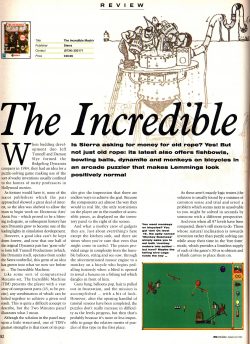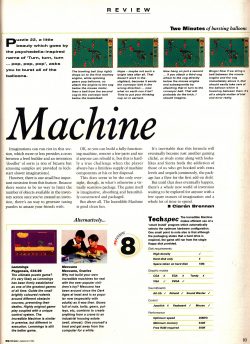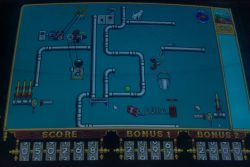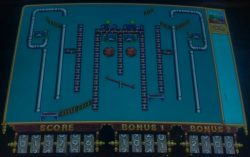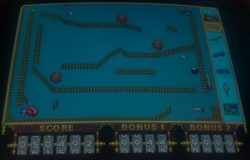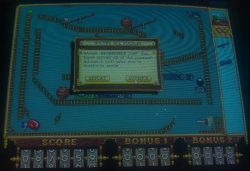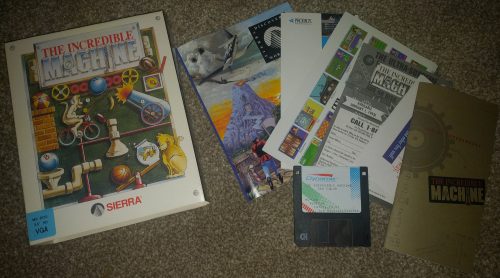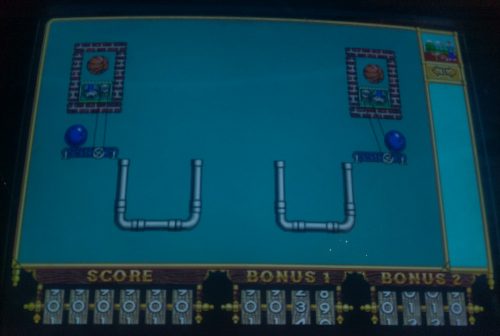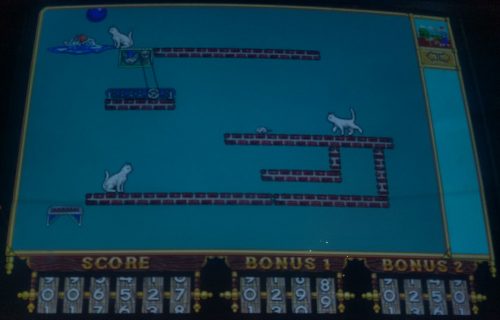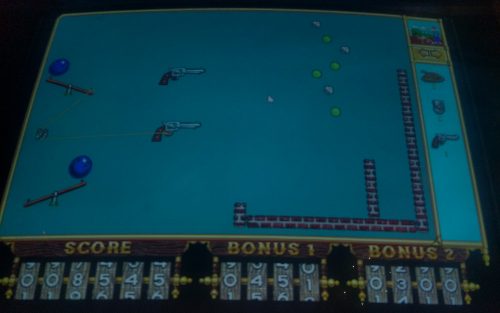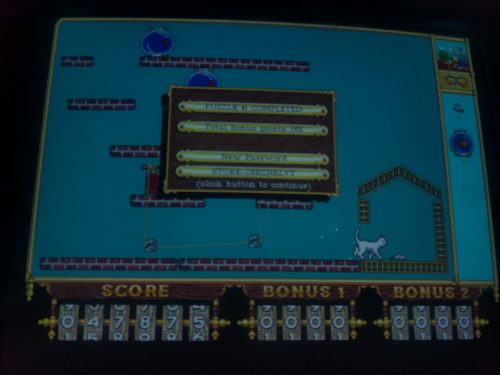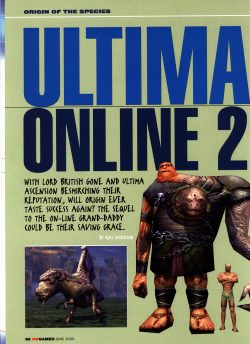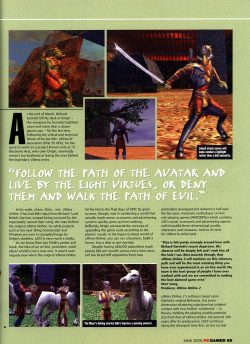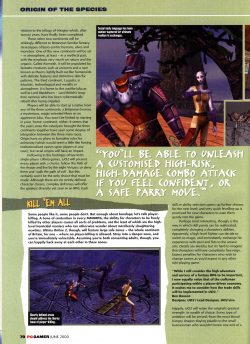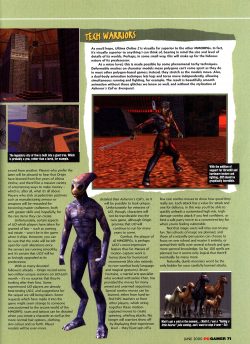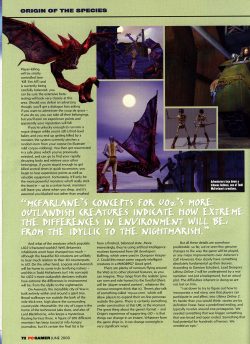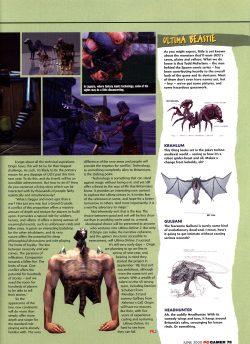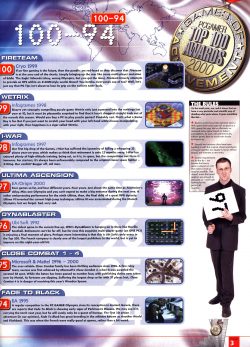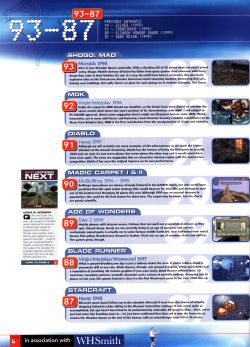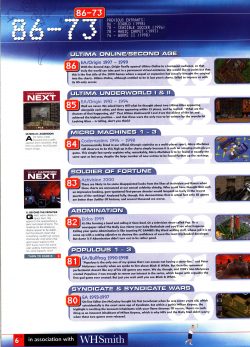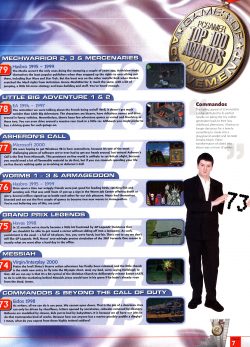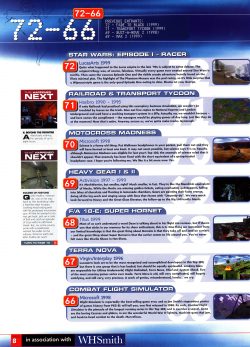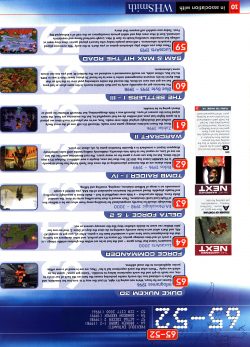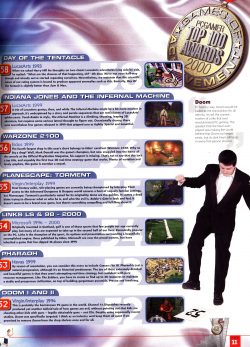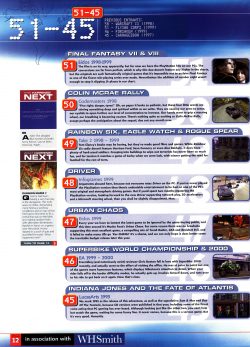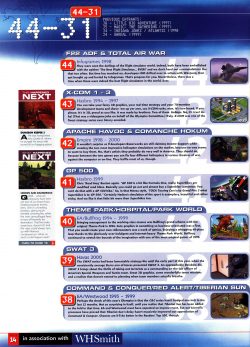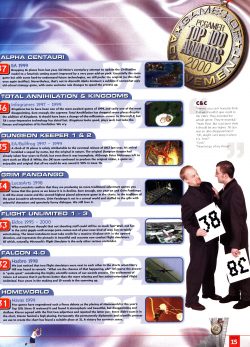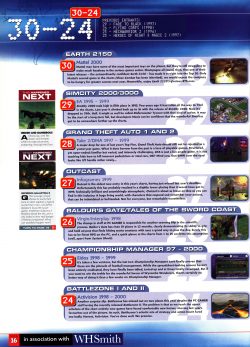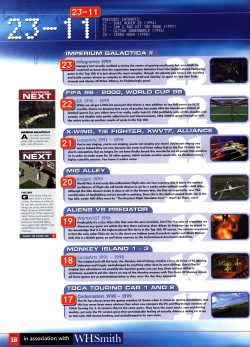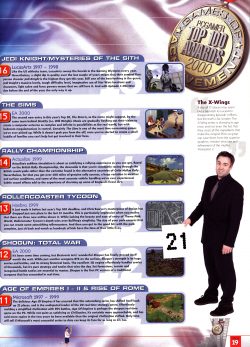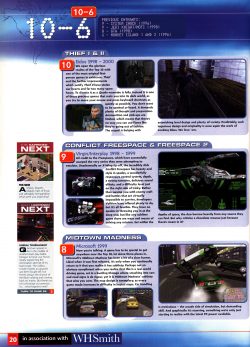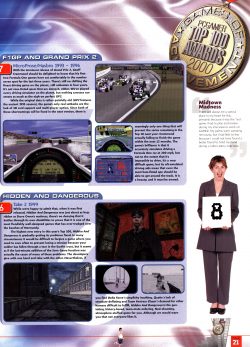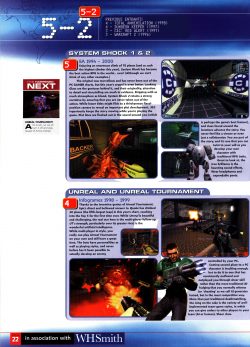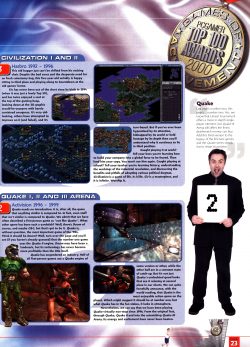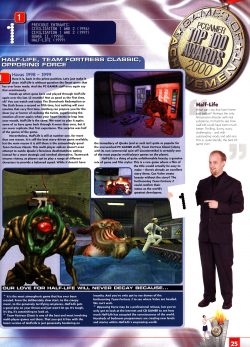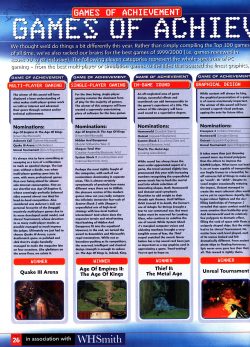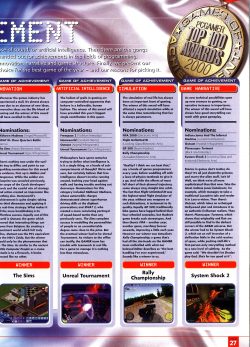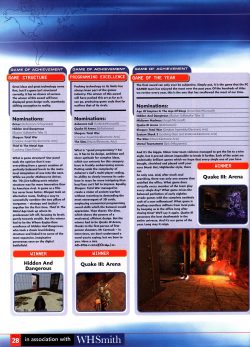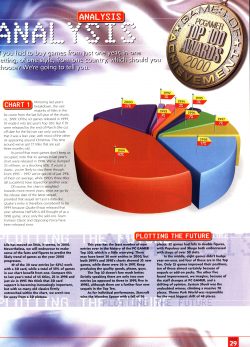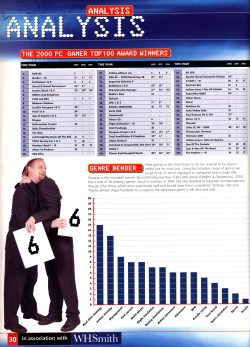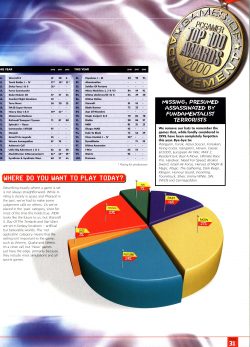Following on from my playthrough, I could only find the one review of The Incredible Machine among the pile of magazines in the March 1993 PC Review. Their feelings are similar to my own except I wouldn’t suggest Meccano as an alternative.
Author Archives: Pix
The Incredible Machine – Part 2
The second half of TIM took me a whole lot longer than the first so I shouldn’t have worried too much about longevity. It included levels that I breezed through in about a minute and others that I agonised over for ages. There doesn’t seem to be much in the way of consistency in terms of difficulty. It’s not necessarily the number of components that make things difficult, it’s the number of alternatives available at the start.
E.g. there is loads going on with this machine in which I have to fire off all the rockets. The pre placed objects make it fairly easy to work back though. I clearly need the torches/glasses to light the rockets, at which point I need to drop something on to them to start the torches, and I can just work back through the process one piece at a time. When the obvious stuff is done, half my objects are placed making life easy.
This level on the other hand had me stumped for ages. I have to get both mice running on each side which means moving the two tennis balls into them. I tried to go via the top route as on the right which worked for one side but not the other even though it was the mirror image. I fiddled around for ages with slight ramp adjustments before I figured out to go from the bottom instead. In hindsight it makes more sense but it’s not always obvious how to approach a new level when you have a mostly blank screen and loads of items to place.
Some of the later levels actually offer fewer objects to place and as such are simpler than what came before no matter how complex the actions of the machine. The multiple solutions carry on right until the end which can help out. The final level requires launching the rocket at the bottom right. I’m clearly supposed to come up with a means to get balls up the screen using see saws from the baseball, through the basketballs, eventually setting off the boxing glove and firing the other baseball into the torch to light the rocket. In my solution I didn’t do any of this. I just stopped the bowling ball from falling with a small conveyor and used a couple more conveyors to whiz the baseball to the left and then back to the right through the hole launching the rocket.
Total gameplay was somewhere along the lines of 6 hours. You can carry on building your own machines with unlimited components but I’m more into solving puzzles so I’m stopping here. The puzzles side of TIM is arguably a little on the short side but probably about right to keep things fun. The number of components in TIM sounded like a lot when I started out but there was a slight lack of variety as the game progressed. I still really enjoyed it. The experience could have been a bit more polished but it’s a solid game that is as playable now as ever.
TIM spawned a whole stack of sequels which I should have a look at some time. The are all available on GOG in one pack for about £1.80 in the current sale, a serious bargain by any standards. As for this first game, I wouldn’t quite put it into the classic category but I expect the sequels could push it over the edge if they offer much in the way of tweaks and improvements.
The Incredible Machine – Part 1
After nearly 2 months of doing little but pack and unpack, I’m moved at last and actually have spare time on my hands. All that effort has left me too knackered to explore the delights of Lancashire quite yet so other than the odd Xmas excursion I’m going to do as little as possible this week and play an old game or two.
First up is The Incredible Machine published by Sierra/Dynamix in 1993. I prefer to read up on it after I’ve played it but I do know it was originally going to be a C64 game many years earlier but got held back for other projects. It was still largely the effort of one coder being developed on a shoestring budget.
The box is the usual Sierra fare from this period full of adverts for the likes of the Sierra Network. More unusual for one of their games is that it only contains the one disk and the game doesn’t even fill that one disk up. Sierra put out AGI games that used more disk space than this.
The manual portrays the game as a genius simulator where us mere mortals can get the experience of being a maverick scientist. In reality, it’s a puzzle game where you have to place some of the 45 or so components available on screen in such a way as to make something or other happen when the machine is started.
For example here is one of the earliest levels where the two bowling balls have to be moved into the containers nearby. The one on the left is preassembled and I just have to mirror it on the right.
Nothing moves until the machine is started at which point gravity will affect any unsupported objects kicking things into life. In this case the basketball falls on the mice, which starts them running and they power the conveyors under the bowling balls moving them into the baskets.
The game offers a huge number of machine parts which are gradually introduced before things get too complex. I do like how untechnical some of these are. The notion of having to move a cat around the screen by enticing it with goldfish or mice is amusing (if not all that realistic) and not my usual idea of a machine. The puzzles can be quite fiddly requiring very precise placement but I quite like this aspect of it.
E.g. in one puzzle, I had to use 3 guns to shoot 3 baseballs into a container. The moment the machine is started all the balls start to drop and gun placement has to be precise so that the bullet hits the right ball and pushes it over to the container. Despite this there is no one solution here as the balls starting bouncing against each other and it’s just a case of trial and error. The machine can be reset any number of times, tweaked slightly and started again. There is the notion of scoring points for being quick but I doubt many players pay too much attention to the score.
The music is upbeat and quirky and sounds equally at home on General MIDI or MT-32. It reminds me of the fantastic Willy Beamish soundtrack which isn’t entirely surprising as the same composer worked on both games. The sound is minimal but adequate with some effects for firing a gun/cannon and the like. The graphics in the game are in a hi-res (for 1993) 16 color VGA mode. This was a good call as the game simply wouldn’t have worked at 320×200. The 16 colours doesn’t allow for detailed graphics but the cartoony 2D look suits TIM well enough.
The interface could use a little refinement. If a puzzle requires more than 5 components you have to flick through each group of 5 on the right of the screen using the arrow buttons. It’s crying out for a scroll bar with mouse wheel support. Another annoyance is that the game doles out text codes every time I complete a level. I could seriously live without having to store and type these in to pick up my progress again next time I play the game. It does at least tell me the last code used when I exit to DOS. Other than those points, this is holding up really well for such an old game. Puzzle games like this seem to have a timelessness that isn’t matched in other genres.
TIM spawned no end of sequels and I can see why. It’s a clever concept, genuinely original and so far at least has somehow managed to not be at all frustrating – a rare quality in puzzle games. I’m definitely not convinced about the games longevity. The box says there are “over 75 levels” and I got through 41 last night in not much over an hour. I have played this before but can’t say I remember the individual puzzles. Maybe the solutions are buried in there somewhere and speeding up progress but I’m not convinced. Things are getting trickier so I expect progress will start grinding to a halt before much longer.
Ultima Online 2 Preview – PC Gamer
I spotted this article on Ultima Online 2 in the June 2000 PC Gamer when I was scanning in the top 100 earlier in the week. It’s quite an in depth look at an early version of the game shortly after Richard Garriott’s departure from Origin. The game looked promising but like near enough everything else Origin did in it’s dying years ended up being cancelled. The project lasted roughly another year after this article with UO2 allegedly being canned mainly because of the continued success of UO1 and EA not wanting to detract from their existing cash cow.
PC Gamer Top 100 – 2000
The playthrough of GTA that was supposed to happen last month still hasn’t got going and I may put it on hold for a while. I did manage to get the DOS version of the game running in 3dfx mode on my Voodoo 3 which took some trial and error. Oddly the trick was to run it from Windows 98. I then realised I couldn’t get CD audio in Win 98 without another audio cable. By the time that was sorted I was in the middle of moving house. I only managed about an hour on the game before moving and have spent nearly every spare minute since unpacking. I’m still not quite done but have got far enough along to break off for a quick request from the other day.
That request was for one more years worth of the PC Gamer Top 100 which gets us up to the year 2000. In terms of PC gaming, I was quite definitely looking back as much as forward at this point. 3D videogames and slot games online had taken over more or less killing off my favoured genre of adventure games and I’d started to look around for the more obscure titles I’d missed along the way. Out of the new titles here, there are only a few I’ve actually played. The biggest shock for me is that one of those new titles is Ultima Ascension which got panned by nearly everyone but obviously not PC Gamer. Ultima Online makes a return as well so not all that bad a year for Origin after all. There is a lengthy preview for Ultima Online 2 in the same magazine which I’ll take a look at later this week. For now here is PC Gamers best of the best for 2000:-

